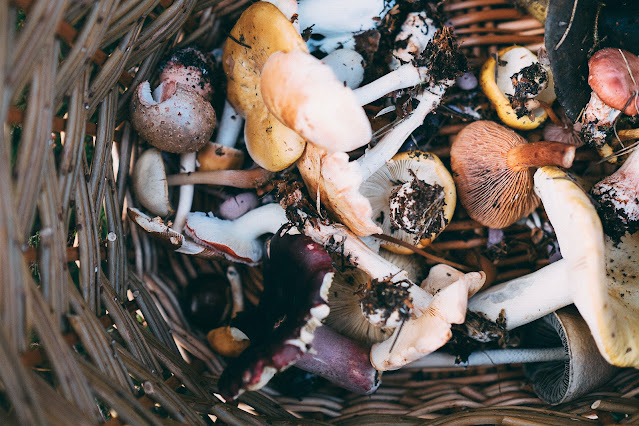A Beginner's Guide to Foraging

Times are tight and it's good to be able to put good healthy food and drink on the table without spending a fortune. It's possible to make entire meals with foraged ingredients - but where do you start?
If you pay attention you might spot people clothing bags or baskets in hedgerows at this time of year - they are almost certainly foraging for wild berries. I recall my grandad taking us out for an annual blackberrying trip, parking on verges and in farm gates and giving each of us children a brown paper bag to store our finds in.
Then there would be blackberry jam and jelly, apple and blackberry crumbles and of course fresh berries with a splash of cream for pud.
With sustainability and sadly a financial crisis all in the news right now there's never been a better time to take up foraging. You might find your local area has more to offer than you think, even if you live in a city. I am very lucky in that the village I live in has a community orchard with pears, apples and plums free to take.
Did you know you can even make "tea" with foraged ingredients. Rosehips, nettles, dried berries and more make a beautiful infusion. Be sure you know what you are picking though - if you are not sure buy from someone who knows what's healthy and what's harmful.
Total beginner? Here are a few tips to help you start foraging.
- Make sure you are not trespassing or scrumping (basically stealing!) Just because the apples or elderberries are in reach over the hedge, or you have found a pathway or you can see people foraging, it does not mean you are allowed to walk or forage there. The UK's Ramblers Association has this to say: "Even with the new freedom to roam in open countryside there are restrictions. First of all to qualify the land must be uncultivated mountain, moor, heath, down and common land, which has been officially mapped. This land is shown in yellow on Ordnance Survey Explorer maps. If you stray off this into domestic spaces, farmland or gardens you are trespassing. Land managers also have the right to close off areas of land for 28 days."
- Take gloves. Many areas where delicious berries, seeds, chestnuts, mushrooms, wild garlic, hazelnuts and other goodies are found, prickly branches and nettles may also be found. So take a sturdy pair of gloves and wear long trousers and long sleeves to avoid being stung or scratched, especially if you intend to harvest nettles.
- Research your intended crop. Obviously different plants and berries need to be harvested at different times of year. There's no use planning to pick blackberries in April. Find out what is likely to be available and check out what can be made from the foraged treasure. Salads, infusions, pies and pasta sauces and so much more than just crumbles can be made with foraged food. The Woodland Trust's essential foraging guide features month-by-month guides on what to pick and how to serve it.
- Pick above dog height. You definitely want to avoid any chance that your delicious ingredients have had any watering by anything other than rain! Also busy roads may have great crops but they are likely to be tainted with exhaust fumes. Wash all foraged food before consuming!
- Don't be greedy. You might have found the best blackberry bushes ever but only take what you are certain you will use. Leave some for other foragers and more importantly, for the wildlife which needs to eat.
- If in doubt, leave it alone. As an example, wild chervil is a delicious herb, but looks almost identical to hemlock, a less delicious, deadly plant that can end your life scarily quickly. Mushrooms are notoriously tricky too so be very careful before picking and/or eating.
Looking to elevate your foraging experience? Why not pair your foraged treasures with Mother Cuppa Teas' exquisite blends? As you explore the bounties of nature, complement your discoveries with the richness of natural teas. Mother Cuppa Teas offers a range of premium tea blends that align perfectly with the ethos of foraging. From invigorating herbal infusions to soothing wellness concoctions, their teas are designed to harmonize with your quest for sustainable, healthful living.
Imagine sipping on Mother Cuppa Teas' Hydrate blend after a day of foraging, replenishing your body with the hydration it craves. Or indulge in the Relax blend, crafted with the goodness of rosehip, pear, cinnamon, and other natural ingredients, the perfect way to unwind after an adventurous day outdoors. For those seeking an energy boost, the Energise blend with its blend of beetroot, ashwagandha, and other revitalizing elements is an ideal companion for your foraging escapades.
Mother Cuppa Teas' commitment to quality and wellness makes them an excellent partner on your foraging journey. With their enticing blends, you not only nurture your body but also support ethical and health-conscious practices. So, as you step into the world of foraging, remember that Mother Cuppa Teas is there to enhance your experience and complement your culinary adventures with the beauty of natural, nourishing teas.










Leave a comment